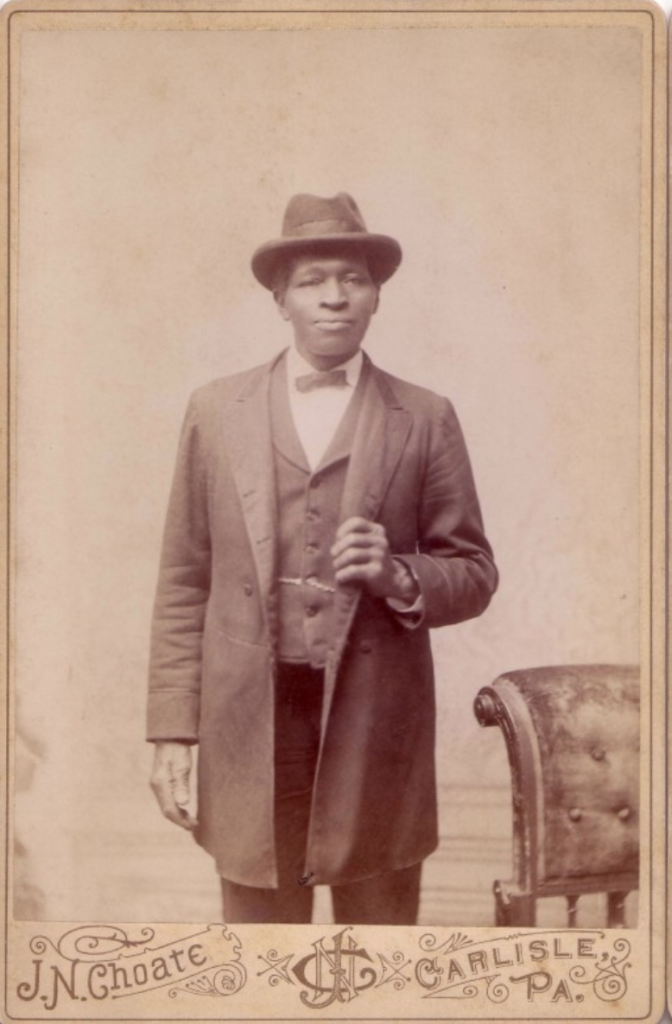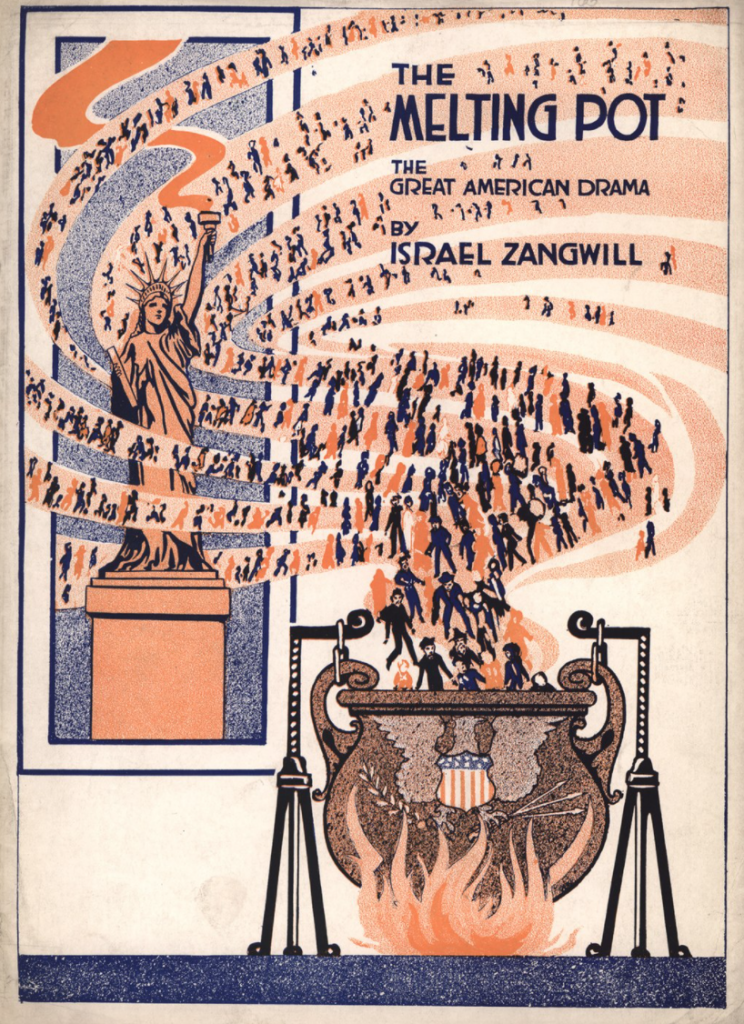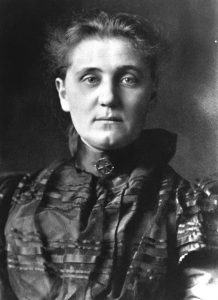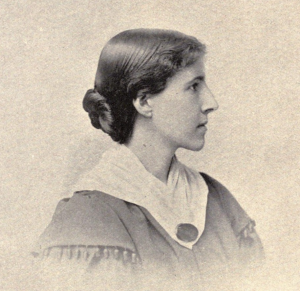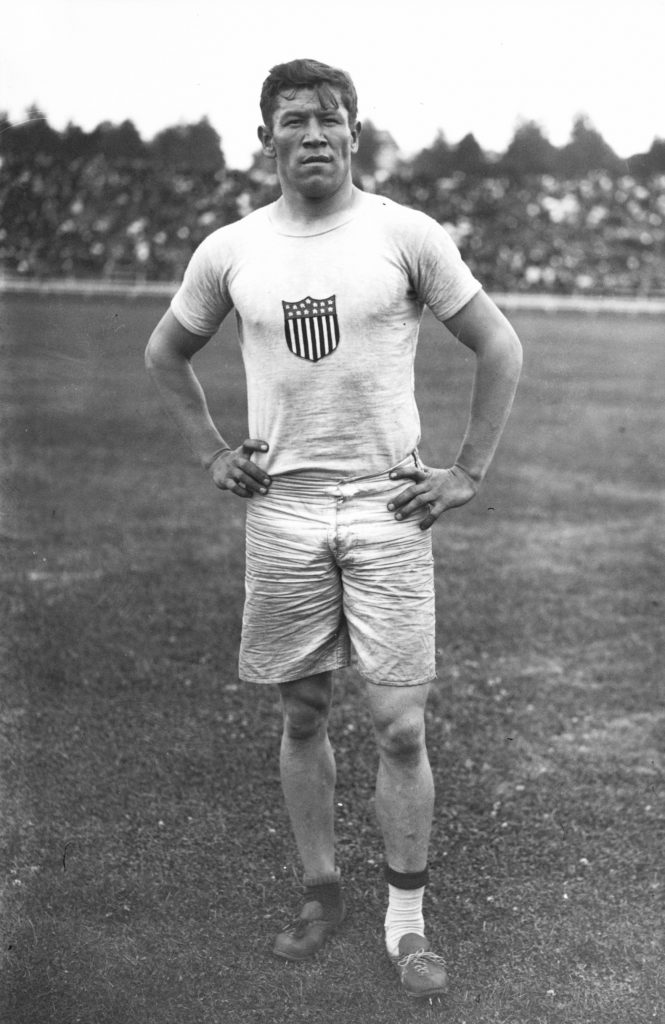“The rise of cities, the evolution of American immigration, the transformation of American labor, the further making of a mass culture, the creation of great concentrated wealth, the growth of vast city slums, the conquest of the West, the emergence of a middle class, the problem of poverty, the triumph of big business, widening inequalities, battles between capital and labor, the final destruction of independent farming, breakthrough technologies, environmental destruction: industrialization created a new America.”
–Chapter 18, “Life in Industrial America,” edited by David Hochfelder in American Yawp (Locke and Wright, eds.), 2020-21 edition. [WEB]
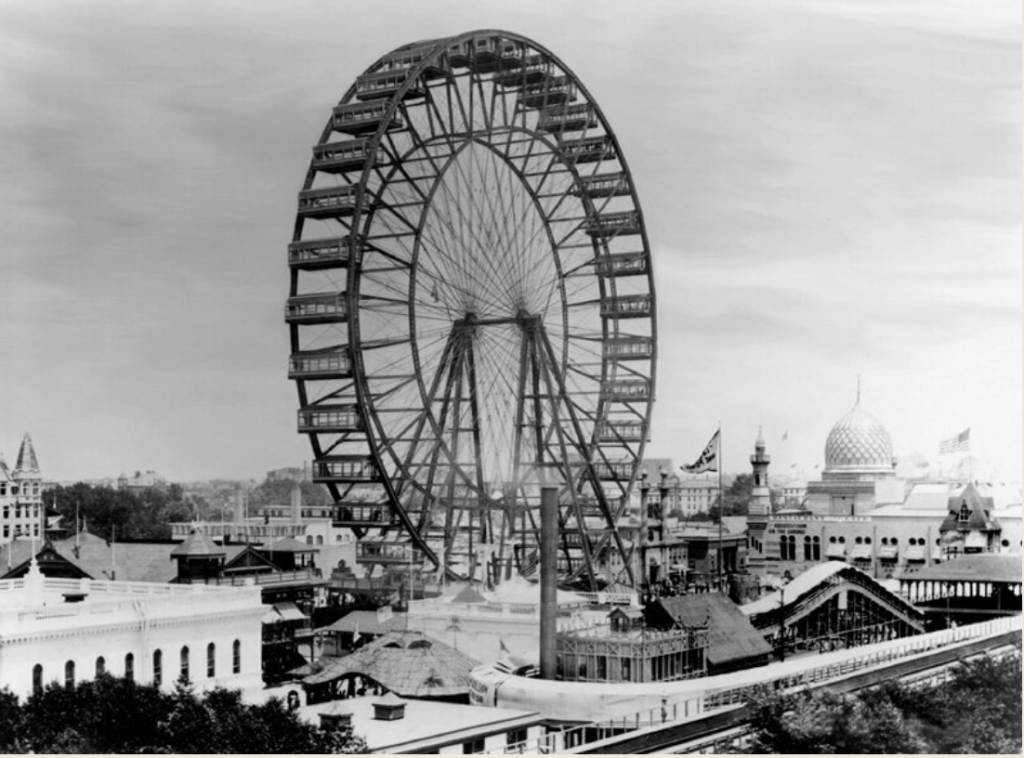
First ferris wheel at the 1893 World Columbian Exposition in Chicago (NY Times)
- 1850 Chicago population = about 30,000
- 1900 Chicago population = 1.7 million (80 percent foreign-born or children of immigrants)
Discussion Question
- How does Chicago, a classic “gateway city,” illustrate the intersection of post-Civil War American social and economic trends, such as industrialization, urbanization, and immigration?
Measuring Progress
Statistics (via American Yawp, chapter 18)
- For twenty years, between 1866-1886, cowboys drove about one million cattle each year from Texas to Kansas for rail transport to Chicago for slaughter and meatpacking at the Union Stock Yards and then eventual consumer distribution, serving about 80% of national meat consumption.
- Inventor Thomas Alva Edison promised that at his “invention factory” in Menlo Park, NJ, they would produce “a minor invention every ten days and a big thing every six months or so” (Edison eventually received over 1,000 patents for his inventions, including those related to electric power and lighting, phonograph, and motion pictures)
- By 1920, according to the US Census, more Americans lived in urban areas (2,500+ people) than rural areas
Assimilation and Progress
- In 1865, there were over 4 million ex-slaves or freed people in the US (Yawp, chap. 15)
- By 1900, there were only about 250,000 Native Americans in the American West (Yawp, chap. 16)
- By 1880, there were over 200,000 Chinese immigrants in the American West (Yawp, chap. 16)
- During a 50-year period (from 1870-1920), over 25 million immigrants arrived in the US mostly from Southern and Eastern Europe (Yawp, chap. 18)
To find out what happened to Tom Torlino and his descendants, read this 2013 article from the Navajo Times
The same man who photographed Tom Torlino in Carlisle (John N. Choate) also took this photograph on the left of ex-slave Henry W. Spradley
- Henry W. Spradley, late 1870s
- Booker T. Washington, late 1870s
Would Spradley have written his life story as “Up From Slavery” as Booker T. Washington did?
Should historians characterize the “melting pot” ideal as an illustration of progressive reform or as a type of cultural genocide?
Gender and the Limits of Progress
- Settlement House reformer Jane Addams
- Author Charlotte Perkins Gilman
- Activist Ida B. Wells
- Jane Addams was the first American woman to win the Nobel Peace Prize (1931)
- Charlotte Perkins Gilman wrote the short story, “The Yellow Wallpaper” (1892) and a landmark study, Women and Economics (1898)
- In 1892, journalist Ida B. Wells launched a national anti-lynching campaign that lasted for decades
- Women’s suffrage activist and future US Senator (for a day) Rebecca Latimer Felton (D-GA) once said: “If it takes lynching to protect women’s dearest possession from drunken, ravening beasts, then I say lynch a thousand a week.”
Carlisle v. Army (1912)
 Recently rediscovered photograph of 1912 Carlisle v. Army football game, courtesy of Aiden Pinsker
Recently rediscovered photograph of 1912 Carlisle v. Army football game, courtesy of Aiden Pinsker
- Frank Mt. Pleasant, 1908 Olympics and Dickinson College Class of 1910
- Jim Thorpe, 1912 Olympics



